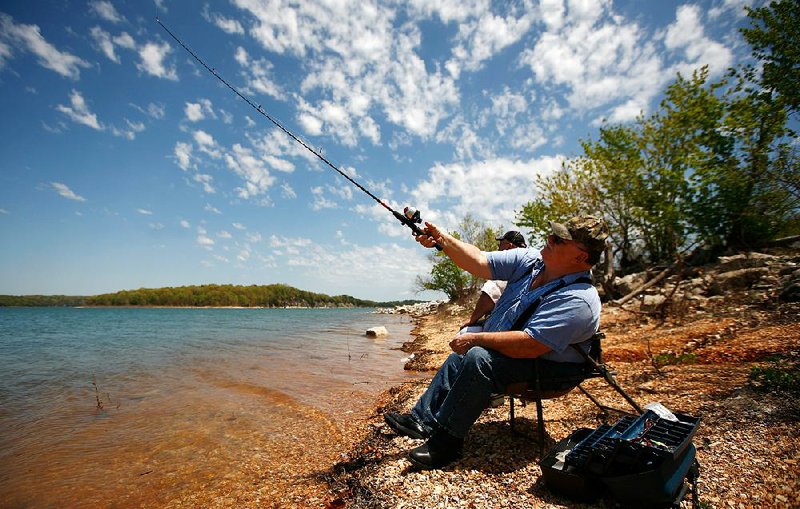Northwest Arkansas isn’t out of the drought yet - but it’s close.
A meteorologist with the National Weather Service in Tulsa said it’s unlikely that Northwest Arkansas will see a third year of sweltering temperatures and dry conditions, which have hit the agricultural industry hard. April has been cooler than usual, with steady rainfall.
As of Monday, the U.S. Drought Monitor showed small areas of moderate drought to abnormally dry conditions in Northwest and southwest Arkansas. The majority of the state was clear of any drought warning.
The water level in Beaver Lake’s seasonal conservation pool in Rogers surpassed its normal level of 1,120.43 feet on Sunday after being as low as 1,108.3 feet in January. The level in the U.S. Army Corps of Engineers-controlled lake was 1,120.76 feet as of 2 p.m. Monday, which was .29 foot above normal.
Sean Harper, project manager for the Army Corps, said the lake “is in great shape right now.”
“It’s slowly creeping up as we have these occasional rain events,” Harper said.
Mike Teague, a meteorologist with the National Weather Service, said the Northwest Arkansas Regional Airport reported rainfall for the month at 5.75 inches, roughly 1.6 inches above the normal mark for April. At Drake Field in Fayetteville, rainfall amounts totalled 5.53 inches, about 1.31 inches more than usual for the month.
Rain at both cities’ reporting stations is a good 2 inches above normal for the year so far, Teague said.
Adequate rainfall at the end of April, however, doesn’t mean favorable conditions will continue. In 2010 and 2011, the region’s rainfall dried up in May and got drier into the summer.
Historically speaking, however, drought is not likely to happen a third consecutive year.
“It would be kind of unprecedented,” Teague said.
There was a stretch of several years in a row that were hot and dry in the 1930s and again in the 1950s, “but to be as record-setting as the last couple of years were, and then to tack a third year on there would be pretty unusual, to say the least,” he said.
Those who study long term climatology feel the chances are pretty slim, he added.
This year’s April is likely to land a spot in the Top 5 coolest Aprils in Northwest Arkansas and eastern Oklahoma since climatologists began keeping records at the turn of the 20th century. In Fayetteville, the average temperature in April this year has been 54.7 degrees - 2 degrees cooler than normal. The same can be said for Bentonville, with an average April temperature of 54, Teague added.
In previous years, warmer temperatures caused the ground to soak up moisture. But the cool fronts are continuing to move in on a regular basis, and that helps, Teague said.
When a lake’s conservation pool begins to rise, water is released into the flood control pool. Two lakes controlled by the Corps of Engineers downstream from Beaver Lake - Bull Shoals and Table Rock lakes - are currently 4 feet and 2 feet above normal, respectively. When those lakes flow into their flood control pools, it then becomes Beaver Lake’s responsibility to hold more water, Harper said.
There won’t be a lot of water generation on Beaver Lake, so as the tributaries flow into it, “there will be a slow rise on the lake as we go forward,” he said.
On May 1, the Army Corp will adjust its conservation pool level upward for summer.
Northwest Arkansas, Pages 7 on 04/30/2013

